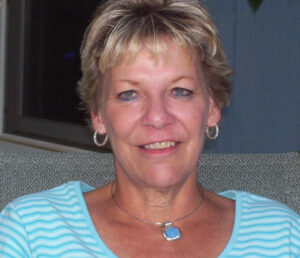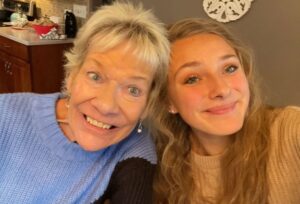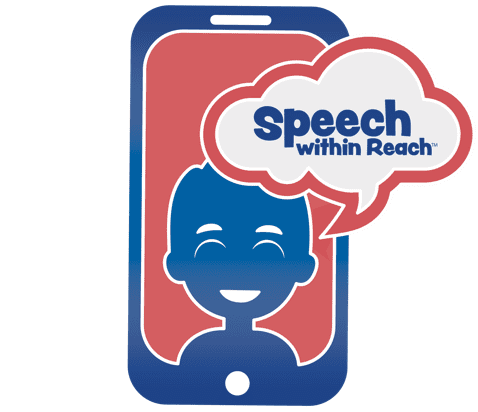Having a stroke turns life completely upside down in an instant. Suddenly, tasks that once felt effortless, like brushing your teeth, walking to the mailbox, and eating, can become incredibly difficult or impossible. A person’s independence can feel stripped away, and life must be learned in an entirely different way. A stroke doesn’t only impact the individual who has to endure the pain and change. Family and friends often find themselves navigating the emotional toll of watching someone they love go through unimaginable difficulties and a life-altering recovery process.
Stroke recovery is a journey full of hardships, modifications, and exhaustion. However, stroke recovery can also be a powerful story of perseverance, love, and resilience. I recently had the opportunity to interview someone very dear to me, my grandmother, Jane, about her personal journey through stroke recovery. Her story is one of courage. Hearing her story will provide a sense of hope and triumph in your own life.

Jane: 2014
Meet Jane
Jane, now 73 years old, has always lived an active and full life. Two years before her life-changing stroke, she experienced a transient ischemic attack (TIA)—a warning stroke that doesn’t cause permanent damage but signals future risk. Around that time, she was diagnosed with atrial fibrillation (Afib), a heart condition that causes irregular and often rapid heartbeat. Afib increases the risk of stroke due to potential blood clots, so Jane was prescribed blood thinners. While these medications are important for preventing clots, they can also raise the risk of bleeding in the brain.
On October 17th, 2023, her 72nd birthday, Jane suffered a hemorrhagic stroke, which occurs when a blood vessel in the brain ruptures, causing bleeding in or around the brain. That morning, she had an unusual headache, something she rarely experiences. Despite feeling unwell, her daughter convinced her to go out to dinner with family- this became a life-saving decision. While at the restaurant, she began to feel worse. Her left arm went numb, and she instinctively started slapping it to try to regain feeling.
My mom, a nurse, quickly noticed something was wrong. Jane’s face was drooping on one side, and she seemed disoriented. She immediately began asking stroke assessment questions: “Can you smile?”, “What’s your name and address?”. These are part of the F.A.S.T. stroke test—Face, Arms, Speech, Time—used to recognize signs of a stroke. Realizing something serious was happening, she called 911 right away.
According to the American Stroke Association, these are the warning signs that a stroke is present:
- F = Face Drooping – Does one side of the face droop, or is it numb? Ask the person to smile. Is the person’s smile uneven?
- A = Arm Weakness – Is one arm weak or numb? Ask the person to raise both arms. Does one arm drift downward?
- S = Speech Difficulty – Is speech slurred?
- T = Time to call 911 – Stroke is an emergency. Every minute counts. Call 911 immediately. Note the time when any of the symptoms first appear.
The First Hours
At the hospital, doctors confirmed that Jane had a brain bleed. It was a critical situation. She underwent a series of tests, including a CT scan, to assess the damage. Fortunately, she received an emergency stroke medication within the crucial three-hour window, which often improves outcomes significantly.
Jane’s physical challenges were immediate. She couldn’t walk, could barely lift her head, and had minimal movement in her left arm and hand. Because her stroke occurred on the right side of her brain, it impacted the left side of her body. Thankfully, her speech remained intact. Therapists quickly began evaluating her with tasks like drawing and swallowing assessments to determine her capabilities.
One doctor later told her that if she had gone to bed that night without seeking help, she likely wouldn’t have woken up.
The Road to Recovery
Emotionally, the journey was just as challenging. Jane faced overwhelming anxiety and sadness, feelings that deepened as the reality set in that her life would look very different moving forward. Yet she refused to give up. “It could be worse,” she reminded herself often.
She began various forms of therapy right away: physical therapy four days a week for an hour each session, as well as occupational therapy. Over time, as her condition improved, Medicare discontinued coverage, which was a difficult setback. After over a year in rehabilitation, Jane made the decision to move back home, where she now receives in-home care and will start physical therapy again to continue her recovery.
One of the most challenging parts of her journey was being away from the comfort of her home and losing therapy support just as she was making progress. But through it all, her support system never wavered. Her family, caregivers, and certified nursing assistants (CNAs) became pillars in her life. She built close bonds with her caregivers, and their encouragement continues to play a vital role in her healing.
Daily Life Today
Jane still faces challenges daily. She is not yet able to walk independently, but she is determined to regain that ability. She was recently fitted for a brace on her left leg and remains hopeful that continued therapy will bring even more improvement.
Her day begins with a morning prayer. Her nurse helps her apply lotion, assists her in using a sit-to-stand lift, helps her get dressed, and prepares her breakfast. Despite her life looking quite different, Jane’s outlook on life is deeply rooted in gratitude for her family, her care team, and the chance to keep moving forward.
Wisdom From Jane
When I asked Jane what this experience has taught her, she said:
“You can achieve anything you set your heart to.”
Her advice to others navigating stroke recovery:
“Never give up. Nothing is impossible, you just need faith and strength to face each day.”
She emphasized that stroke recovery is something you can never truly understand until you’ve lived it. Before her stroke, she knew the warning signs and had seen others go through it. But she never realized how long, complex, and emotionally draining the recovery process would be.
Still, she’s proud. Proud of how hard she works every day to walk again. Proud of the resilience she’s found in herself. And incredibly thankful for the doctors, therapists, nurses, and family who have supported her with compassion and care every step of the way.
A Final Message
Jane’s story reminds us that recovery isn’t linear, but a journey that requires perseverance, love, and support, and healing is possible. Her journey serves as a powerful message to stroke survivors and their families: you are not alone, and hope is always within reach.

Jane and Hanna: 2023
___________________________________________________________________________________
Resource: https://www.stroke.org/en/about-stroke/stroke-symptoms
Personal Testimony by Jane, interviewed by granddaughter Hanna Moeller
-HANNA MOELLER, Illinois State University, Senior Research and Marketing Intern
-NICOLE BUTLER, M.S., CCC-SLP/L (ASHA Certified and licensed Speech-Language Pathologist, Founder and Executive Director of Speech Within Reach.)
SPEECH WITHIN REACH provides in-person and virtual telehealth speech therapy for children and adults. We are grateful to support your speech therapy needs. Please feel free to reach out to us.
